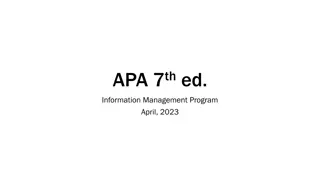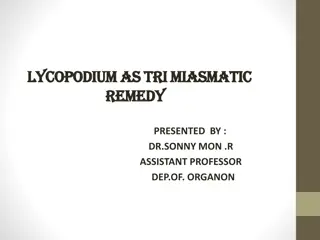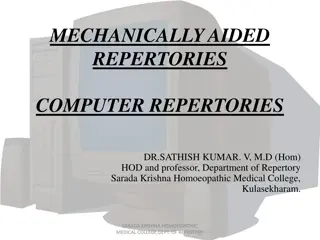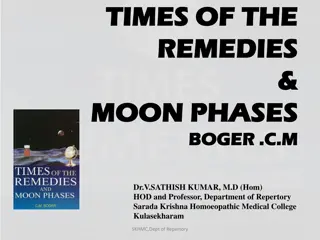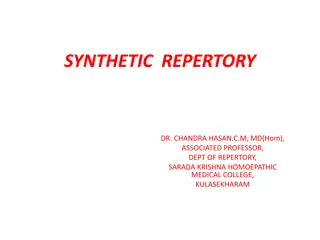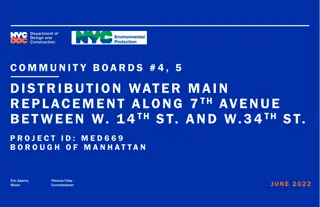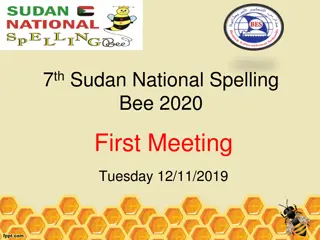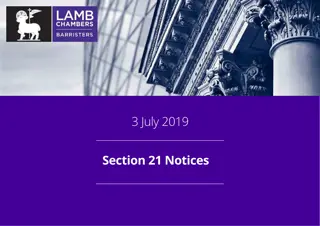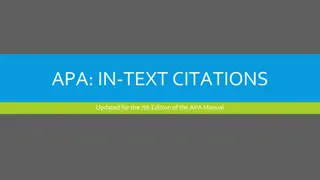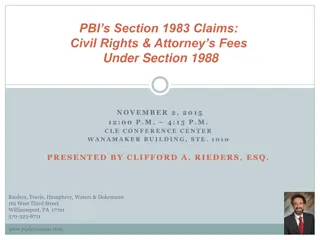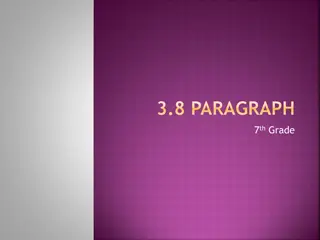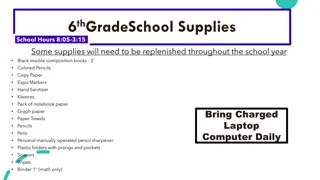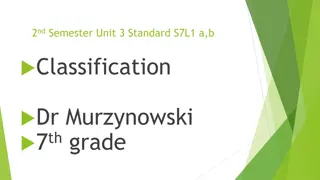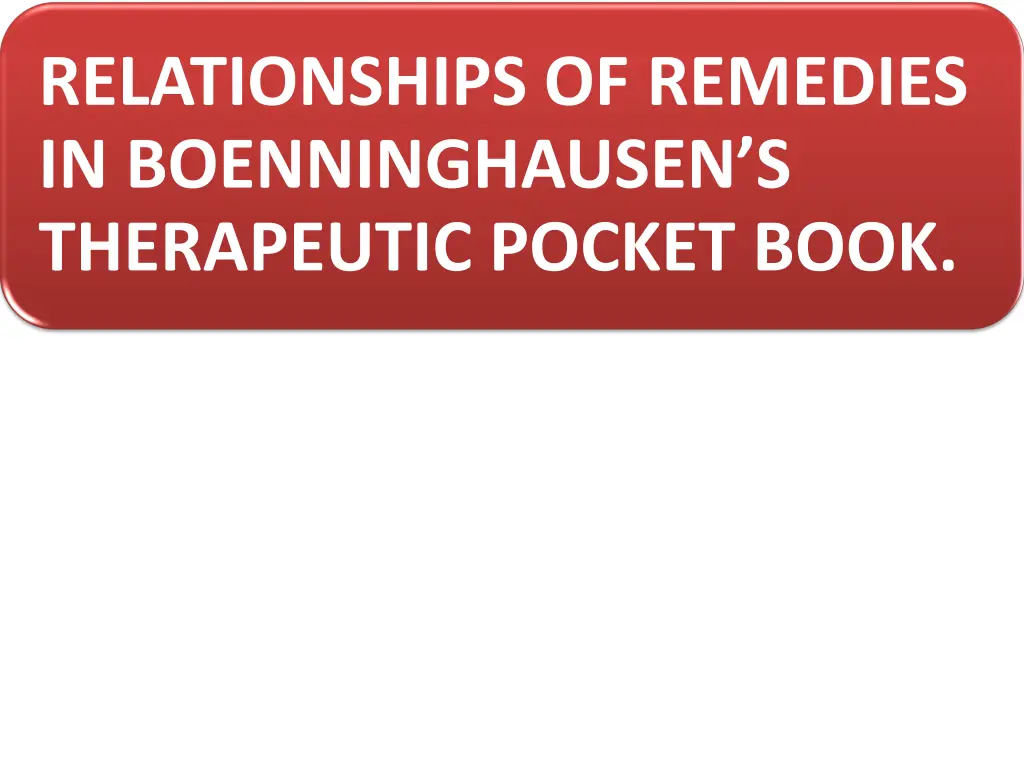
Key Insights into Boenninghausen's Remedies Relationships
Explore the significance of remedies relationships in Boenninghausen's Therapeutic Pocket Book, focusing on complementary, antidotes, and inimical relationships between remedies. Learn about the construction, sections, and importance of this vital aspect in homeopathic practice.
Download Presentation

Please find below an Image/Link to download the presentation.
The content on the website is provided AS IS for your information and personal use only. It may not be sold, licensed, or shared on other websites without obtaining consent from the author. If you encounter any issues during the download, it is possible that the publisher has removed the file from their server.
You are allowed to download the files provided on this website for personal or commercial use, subject to the condition that they are used lawfully. All files are the property of their respective owners.
The content on the website is provided AS IS for your information and personal use only. It may not be sold, licensed, or shared on other websites without obtaining consent from the author.
E N D
Presentation Transcript
RELATIONSHIPS OF REMEDIES IN BOENNINGHAUSEN S THERAPEUTIC POCKET BOOK.
INTRODUCTION : Boenninghausen being a practical man and lawyer by profession, his logical mind was fully convinced about the results and applications of homoeopathic principles and started working and soon he came in contact with Dr. Hahnemann Lastly , after ten years of experience, he published therapeutic pocket book for homoeopathic physicians to use at the bedside and in the study of the Materia medica . At that time he discovered a device to index the ever enlarging Materia medica and published first repertory in 1832 repertory of anti psoricmedicines with a preface by Hahnemann.
Plan and construction of BTPB : Entire Repertory has been divided in 7 main chapters, 1. Mind and intellect 2. Parts of the Body and Organs 3. Sensation and complaints 4. Sleep and dream 5. Fever 6. Alternation of state of health 7. Relationship of Remedies
RELATIONSHIP OF REMEDIES In this chapter Boenninghausen has reflected his own experience and the way he studied and understood the remedies. By his keen observant mind, he realized that there exists some relationship among the remedies. Thus, he worked on it and incorporated a new concept in his Therapeutic Pocket book.
Even though this section is very important in management of cases, it is observed that in today s times many Homoeopaths fail to appreciate the essence of this section and utilize it in their practice. This might probably be due to lack of knowledge and understanding of this particular section. Various type of relationships between the remedies such as complementary, antidotes and inimical are given in this section.
BOENNINGHAUSENS RELATIONSHIP SECTION 1. Mind 2. Localities 3. Sensations 4. Glands 5. Bones 6. Skin 7. Sleep & Dreams 8. Blood, Circulation and Fever 9. Aggravations: Time and Circumstances 10. Other remedies 11. Antidotes
Number of Rubrics Nil Number of pages covered 161 Arrangement of rubrics Does not arise Number of subchapters Nil In the earlier editions of the Pocket Book he refers to this chapter as concordance. Each heading in this chapter of the book corresponds to a general section heading in the first part of the book.
Based on principle sphere of action Basic Logic depends on: - Related remedies are mutual antidotes. - Related remedies act curatively. - One-sided diseases present an excellent opportunity as remedies are required in succession. - Cases with severe aggravation without improvement. USEN S RELATIONSHIP SECTIO
USES OF RELATIONSHIPS SECTION Most useful section, even Kent, who criticized the method of repertorisation with BTPB, has advocated the use of this section. Used to study relationship of remedies at various levels mind, parts, sensations, modalities.
Indicated medicine has helped a little but no further improvement. To find out a close running medicine, which can be thought of in second prescription. To ascertain second medicine, if the first one, does not meet with the expectation. To find out a analogue for deep acting drug.
This section helps in selection of the remedies with more certainty because we are able to compare the remedy by working out the relationship with regard to the case at hand and not on any preconceived basis.. We can use it to find out the sequence of remedies and the remedy which could follow the remedy already prescribed.
METHOD OF WORKING: When the indicated medicine was prescribed and it had helped a little with no further improvement then with the help of this section, we can find out close running medicines. Step 1- first select the medicine which was given in first prescription, then refer the sub heading which could be the main complaint of the patient and use it as the first rubric. Step 2- next, take all other subheading like mind, localities and so on one after the other.
Step 3- consider the first rubric as eliminating rubric i.e. only those medicine s which are present in first rubric would be taken for further Repertorisation. Step 4- lastly, from the group of similar remedies obtained we can select one remedy by referring Materia medica.
DRAWBACK: The only drawback of this section is the number of medicines are very few because of which we cannot use it for all required cases.
Bibliography : Bibliography : Boenninghausen s therapeutic pocket book for the Homoeopathic physicians to use at the bedside and in the study of the Materia medica, by T.F.ALLEN. Study of Repertories: alchemy of Homoeopathic methodology by Munir Ahmed Essentials of repertorisation by Dr. Shashikant Tiwari.
THANK YOU THANK YOU


